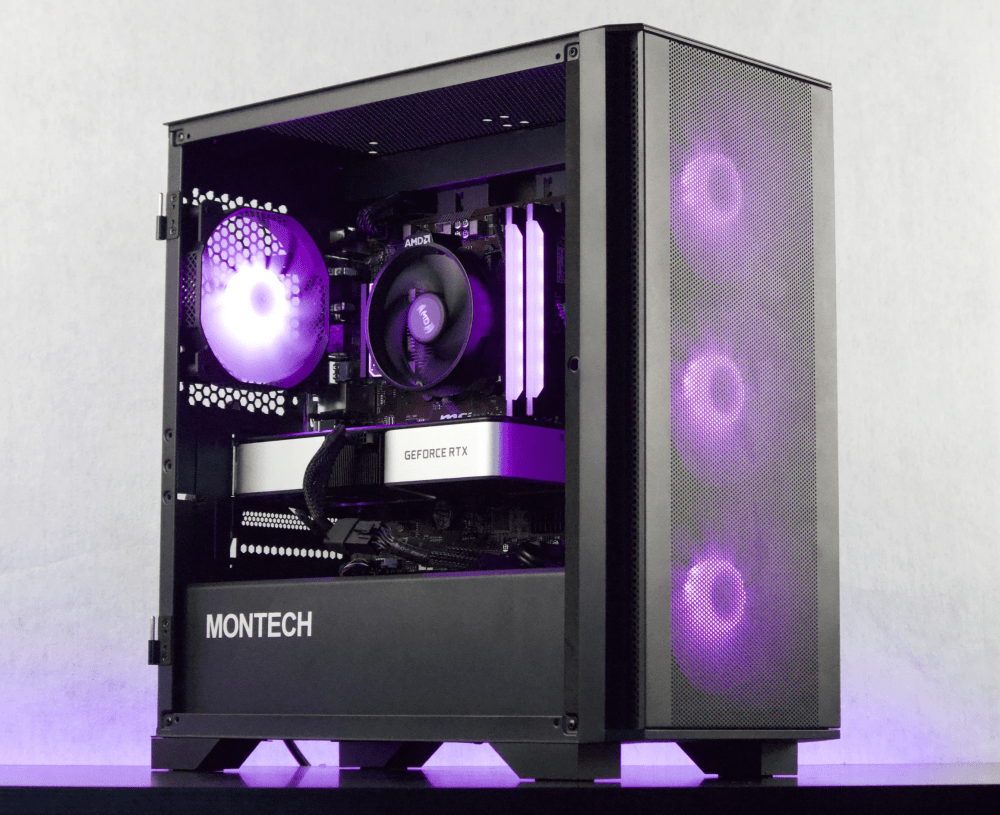Thermal paste is an essential component in keeping our CPUs cool and functioning optimally. However, sometimes accidents happen, and thermal paste can end up on the delicate CPU pins. This can cause a range of issues, from reduced performance to even permanent damage if not addressed promptly. In this blog post, we will guide you through the process of safely and effectively removing thermal paste from CPU pins, ensuring that your processor remains in top-notch condition. We will also discuss the risks of leaving thermal paste on the pins and provide tips on preventing future mishaps. So, let's dive in and learn how to properly clean those CPU pins!
Understanding the Basics: What is Thermal Paste and Why is it Used?
Thermal paste, also known as thermal compound or thermal grease, is a specialized substance used in computer hardware, particularly between the CPU (Central Processing Unit) and the heatsink. Its primary purpose is to facilitate heat transfer between the CPU and the heatsink, ensuring efficient cooling.
When a CPU is in operation, it generates heat due to the electrical current flowing through it. This heat needs to be dissipated to prevent the CPU from overheating, which can lead to performance issues or even permanent damage. The heatsink is responsible for absorbing and distributing the heat away from the CPU.
However, even with a properly installed heatsink, there are microscopic imperfections on the surface of both the CPU and the heatsink. These imperfections can create small gaps and air pockets, hindering the transfer of heat. This is where thermal paste comes into play.
Thermal paste fills in these gaps and air pockets, creating a more direct contact between the CPU and the heatsink. It has excellent thermal conductivity properties, allowing heat to flow more efficiently from the CPU to the heatsink. By eliminating the air gaps, thermal paste improves the overall cooling performance of the system.
In addition to its thermal conductivity properties, thermal paste also helps to prevent corrosion and oxidation on the metal surfaces of the CPU and the heatsink. It provides a protective layer that keeps the metal surfaces in good condition over time.
Overall, thermal paste plays a crucial role in maintaining the temperature of the CPU within safe limits, ensuring its longevity and optimal performance. However, when thermal paste inadvertently finds its way onto the CPU pins, it can cause significant problems. In the following sections, we will explore the risks associated with thermal paste on CPU pins and guide you through the process of safely removing it.
The Risks of Thermal Paste on CPU Pins
When thermal paste comes into contact with the delicate CPU pins, it can pose several risks and potential issues. It is essential to understand these risks to appreciate the importance of removing thermal paste from CPU pins promptly. Let's explore some of the risks associated with thermal paste on CPU pins:
1. Electrical Conductivity Issues
Thermal paste is not designed to be electrically conductive. However, some thermal pastes may contain conductive materials such as metal particles. If thermal paste comes into contact with the CPU pins, it can create a conductive pathway between the pins, leading to short circuits or other electrical malfunctions. This can result in system instability, crashes, or even permanent damage to the CPU or other components.
2. Poor Contact and Reduced Performance
CPU pins are responsible for establishing a connection between the processor and the motherboard. When thermal paste interferes with the pins, it can disrupt the proper contact between the CPU and the motherboard socket. This can lead to poor electrical conductivity, reduced performance, and even system instability. The thermal conductivity properties of the thermal paste can also be compromised, further affecting heat dissipation and cooling efficiency.
3. Difficulty in CPU Removal
If thermal paste has seeped into the CPU socket and onto the pins, it can make the removal of the CPU challenging and potentially cause damage in the process. The sticky nature of the thermal paste can cause the CPU to stick to the socket, making it difficult to safely lift it out. Forceful removal attempts can bend or break the fragile pins, resulting in irreparable damage.
4. Corrosion and Oxidation
Thermal paste typically contains chemical compounds that can corrode or oxidize the metal surfaces it comes into contact with. When thermal paste is left on the CPU pins, it can lead to corrosion or oxidation over time. This can deteriorate the quality of the pins, impacting their conductivity and potentially causing connection issues or failure.
5. Difficulty in Troubleshooting
In the event of system issues or component failures, troubleshooting becomes crucial. However, if thermal paste residue is present on the CPU pins, it can complicate the diagnostic process. The presence of thermal paste can mask the true cause of the problem, leading to misdiagnosis or unnecessary component replacements.
Understanding these risks highlights the importance of removing thermal paste from CPU pins. In the following sections, we will delve into the step-by-step process of safely removing thermal paste and restoring the optimal functioning of your CPU.
Preparation for Removing Thermal Paste
Before diving into the process of removing thermal paste from CPU pins, it is crucial to make adequate preparations. This section will guide you through the necessary steps and supplies needed to ensure a smooth and safe cleaning process.
Supplies Needed for the Process
-
Isopropyl Alcohol (preferably 90% or higher concentration): Isopropyl alcohol is a key component in safely and effectively removing thermal paste. It helps dissolve the paste without leaving any residue behind. Ensure you have enough isopropyl alcohol to thoroughly clean the CPU pins.
-
Cotton Swabs or Q-tips: These are useful for applying the isopropyl alcohol to the CPU pins and gently scrubbing away the thermal paste residue. Make sure you have an ample supply of cotton swabs or Q-tips to avoid reusing dirty ones.
-
Soft, Lint-free Cloth: A lint-free cloth is essential for drying and wiping off any remaining thermal paste or isopropyl alcohol from the CPU pins. Using a cloth that doesn't shed fibers will prevent any unwanted debris from getting stuck on the pins.
-
Compressed Air Canister: A canister of compressed air is helpful for blowing away any loose particles or dust from the CPU pins and surrounding areas. Ensure that the canister is clean and free of moisture to prevent any damage to the components.
-
Non-conductive Tweezers or Toothpicks: Non-conductive tweezers or toothpicks can be used to carefully remove any large chunks of dried thermal paste from the CPU pins. Be gentle and cautious when using these tools to avoid bending or breaking the pins.
Safety Measures to Take Before Starting
-
Power Off and Unplug: Before working on your CPU, power off your computer and unplug it from the electrical outlet. This prevents any accidental power surges or electrical mishaps while handling the delicate CPU pins.
-
Ground Yourself: Static electricity can cause damage to sensitive electronic components. To avoid this, ground yourself by touching a metal surface or using an anti-static wristband. This helps discharge any static electricity from your body before handling the CPU.
-
Work in a Clean and Well-lit Area: Choose a clean, well-lit workspace with ample space to work comfortably. A clutter-free environment reduces the risk of accidentally dropping or misplacing small components during the cleaning process.
By gathering the necessary supplies and taking the appropriate safety measures, you will be well-prepared to begin the process of removing thermal paste from CPU pins. In the next section, we will provide a step-by-step guide to help you through the cleaning process.
Step-by-Step Process of Removing Thermal Paste from CPU Pins
Now that you have made the necessary preparations, it's time to dive into the step-by-step process of removing thermal paste from CPU pins. Follow these instructions carefully to ensure a successful and safe cleaning process:
Step 1: Carefully Removing the CPU
- Start by powering off your computer and unplugging it from the electrical outlet.
- Open your computer case and locate the CPU socket. Refer to your motherboard manual if you are unsure where it is located.
- Gently release the CPU socket lever to unlock the CPU.
- Carefully lift the CPU out of the socket, holding it by the edges and avoiding touching the pins.
- Place the CPU in a safe and clean area, such as an anti-static mat or a clean piece of non-conductive material.
Step 2: Cleaning Process
- Take a cotton swab or Q-tip and dip it in isopropyl alcohol. Ensure the swab is damp, but not dripping wet.
- Gently rub the damp swab against the CPU pins, applying light pressure to remove the thermal paste residue. Be cautious not to bend or damage the pins.
- If there are stubborn or dried thermal paste residues, use non-conductive tweezers or toothpicks to carefully scrape them off. Be gentle and avoid excessive force.
- Continue cleaning each pin individually until all the thermal paste residue is removed. Use a fresh cotton swab with isopropyl alcohol for each pin.
- Once the pins are clean, use a canister of compressed air to blow away any remaining particles or dust from the CPU socket and surrounding areas.
- Take a soft, lint-free cloth and dampen it with isopropyl alcohol. Gently wipe the CPU pins and socket to remove any remaining residue or dirt.
- Allow the CPU and socket to air dry completely before reinstallation. Ensure there is no moisture remaining, as it can cause damage to the components.
Step 3: Testing the CPU post-cleaning
- Before reinstalling the CPU, visually inspect the pins to ensure they are clean, straight, and undamaged.
- Carefully place the CPU back into the socket, aligning the pins with the corresponding holes in the socket.
- Gently press down on the CPU while ensuring it is properly seated in the socket.
- Lock the CPU socket lever back into place to secure the CPU.
- Reassemble your computer and reconnect all the necessary cables and components.
- Power on your computer and monitor its performance. Monitor the CPU temperature and ensure it remains within safe limits during normal usage.
Congratulations! You have successfully removed the thermal paste from the CPU pins. In the next section, we will discuss some essential tips to prevent future thermal paste mishaps and ensure the optimal functioning of your CPU.
Preventing Future Thermal Paste Mishaps
Now that you have learned how to remove thermal paste from CPU pins, it's important to take preventive measures to avoid future mishaps. Proper application of thermal paste and regular maintenance of your CPU can help prevent thermal paste from ending up on the pins again. In this section, we will provide you with some essential tips to ensure the optimal functioning of your CPU and minimize the risk of thermal paste mishaps.
Proper Application of Thermal Paste
-
Cleanliness is key: Before applying thermal paste, ensure that both the CPU and the heatsink are clean and free from any residue or debris. Use isopropyl alcohol and a lint-free cloth to clean the surfaces thoroughly.
-
Apply the right amount: Applying too much or too little thermal paste can hinder its effectiveness. Follow the manufacturer's instructions or guidelines to determine the appropriate amount for your CPU.
-
The pea-size method: One popular method of applying thermal paste is the pea-size method. Place a small dot or pea-sized amount of thermal paste in the center of the CPU. When you attach the heatsink, the pressure will spread the paste evenly.
-
Spread evenly if necessary: Some thermal pastes may require spreading using a plastic card or thermal paste applicator. If instructed by the manufacturer, carefully spread the paste in a thin, even layer on the CPU surface before attaching the heatsink.
Regular Maintenance of Your CPU
-
Keep your system clean: Dust and debris can accumulate on the heatsink and CPU over time, hindering heat dissipation. Regularly clean your system using compressed air to remove any build-up and ensure proper airflow.
-
Monitor CPU temperatures: Install software to monitor your CPU temperatures regularly. High temperatures can indicate inadequate cooling or other issues. If temperatures seem unusually high, check the CPU and heatsink for proper contact and cleanliness.
-
Inspect for thermal paste residue: Periodically inspect your CPU and socket for any signs of thermal paste residue. If you notice any residue around the pins or socket, take immediate action to remove it before it causes any problems.
Signs to Look for if Thermal Paste is Misapplied
-
High CPU temperatures: If your CPU is consistently running at high temperatures, it could be a sign that the thermal paste is not properly applied or has deteriorated. Monitor your CPU temperatures and take action if they exceed safe limits.
-
System instability: Incorrectly applied thermal paste or thermal paste on CPU pins can cause system instability, crashes, or blue screens. If you experience frequent system crashes or instability, investigate the possibility of thermal paste issues.
By following these preventive measures and regularly maintaining your CPU, you can minimize the risk of thermal paste mishaps and ensure the optimal performance and longevity of your system. Remember, prevention is always better than cure when it comes to thermal paste-related issues.
In conclusion, removing thermal paste from CPU pins is a delicate process that requires proper preparation, careful execution, and preventive measures. By understanding the risks involved, following the step-by-step process, and taking preventive measures, you can confidently maintain your CPU and keep it running smoothly for years to come.
Ready to level up your game? Check out Jawa for the best deals on PC gaming hardware





